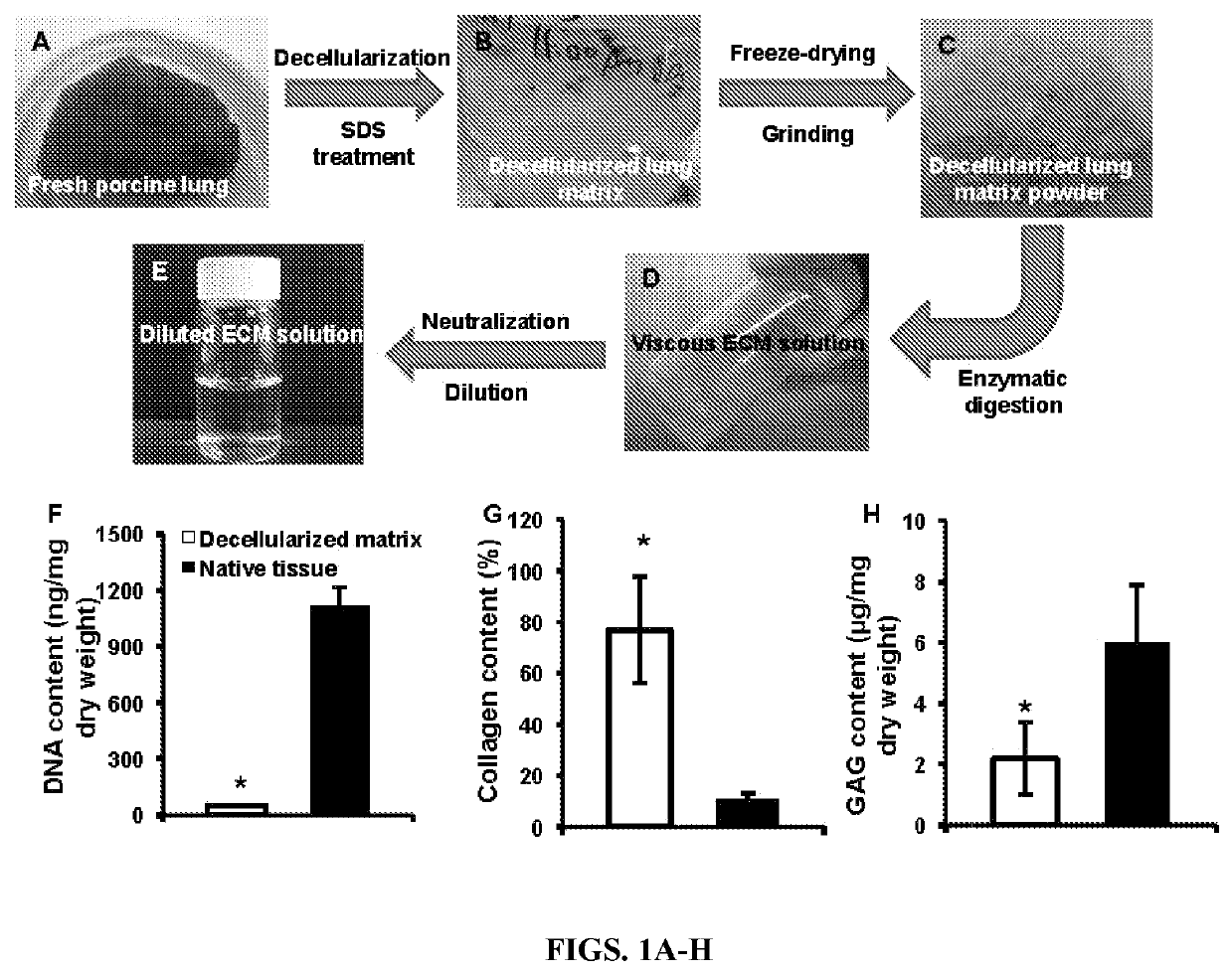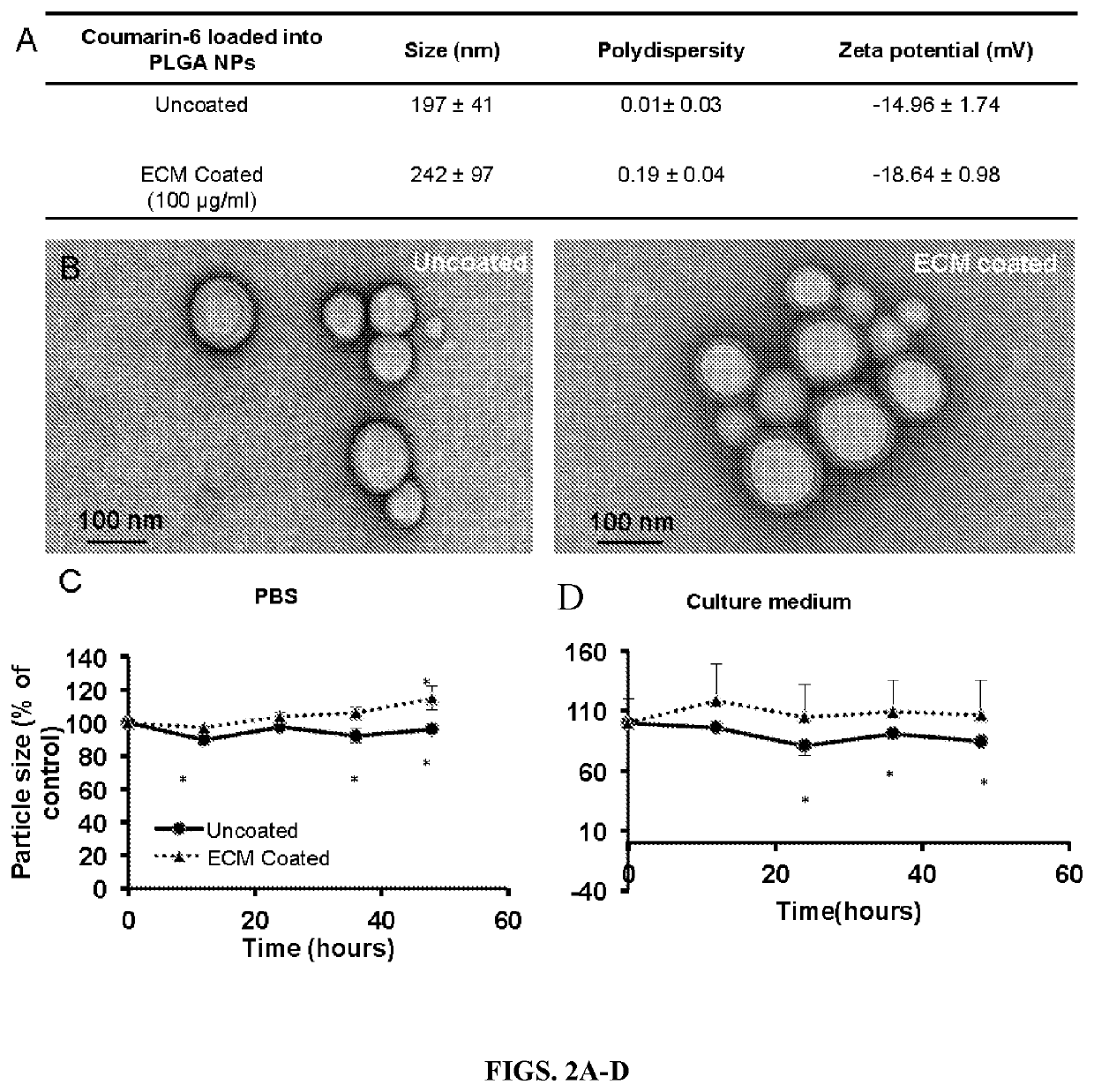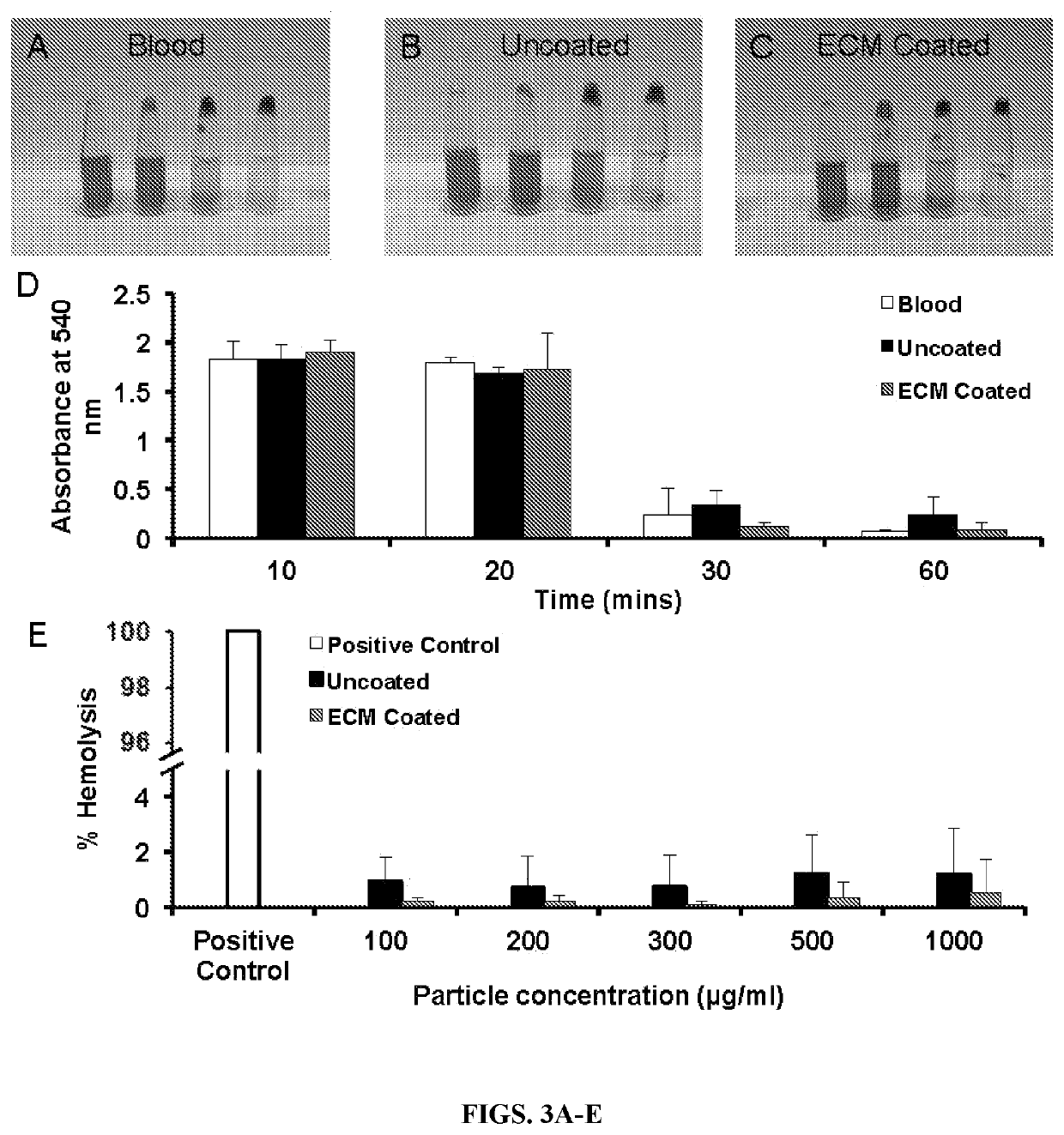Nanoparticles containing extracellular matrix for drug delivery
a technology of nanoparticles and extracellular matrix, which is applied in the direction of drug compositions, dispersed delivery, peptide/protein ingredients, etc., to achieve the effects of increasing the endogenous anti-oxidative capacity of the lung, reducing lung edema and oxidative damage, and increasing the oxidative damage to dna
- Summary
- Abstract
- Description
- Claims
- Application Information
AI Technical Summary
Benefits of technology
Problems solved by technology
Method used
Image
Examples
example 1
ular Matrix Coating Enhances Nanoparticle Uptake and Delays Release by Lung Epithelial Cells
[0054]Materials—Poly (lactic-co-glycolic acid) (PLGA, 50:50) was purchased from the Lakeshore Biomaterials (Birmingham, Ala.). Sodium dodecyl sulfate (SDS), dichloromethane, 6-coumarin, and polyvinyl alcohol (PVA, MW 31,000-50,000 and 87-89% hydrolyzed) were purchased from Sigma Aldrich (St. Louis, Mo.). Albumin from bovine serum (BSA) and Texas Red® conjugated BSA were purchased from Life technology (Carlsbad, Calif.). Type I alveolar epithelial cells (AEC1s) were purchased from Applied Biological Materials Inc. (Richmond, BC, Canada). All other chemicals were purchased from Sigma Aldrich (St. Louis, Mo.).
[0055]Preparation of porcine lung ECM solution (FIGS. 1A-E)—The porcine lung ECM solution was obtained by deceullarization and pepsin digestion, as follows. Briefly, the lungs were harvested from adult pigs (weighing 80-100 kg) from a local slaughterhouse, cut into slices (1 mm in thickness...
example 2
eficiency in Acute Kidney Injury Contributes to Lung Injury
[0075]Animal models—The ischemia reperfusion injury (IRI) model was conducted as previously described (Hu et al., 2010). Briefly, male Sprague-Dawley rats (250-350 g) were housed in a 12-hour light / dark cycle with free access to rodent chow and water. All animal work was conducted following the Guide for the Care and Use of Laboratory Animals by The National Institutes of Health. The Institutional Animal Care and Use Committee at UT Southwestern approved all study protocols. Under anesthesia, renal arteries were clamped with arterial clips (30 minutes) and occlusion was visually verified as blanching of the entire kidney surface. After clips were removed, the kidneys were observed for at least 5 minutes to ensure reperfusion. Sham animals underwent laparotomy of the same duration with manual manipulation of the kidneys but without arterial clamping. At predetermined times after reperfusion, blood was drawn and the kidneys ha...
example 3
ed Lung-Derived Extracellular Matrix Mitigates Hyperoxic Lung Injury
[0097]Decellularized extracellular matrix (ECM) contains a complex cocktail of tissue-specific bioactive components that work in concert to promote cellular homeostasis, and has been used as a scaffold for bioengineered organs or as a substrate to promote wound healing. To examine whether lung-derived ECM could mitigate acute lung injury, fresh porcine lung was decellularized and engineered into a clear solution (3 mg / ml). Sprague-Dawley rats (body weight˜300 g) received the ECM solution (1.5 mg) or placebo (saline) (n=4 each) via one of two protocols: a) direct tracheal instillation followed by continuous hyperoxia (90% O2 for 3 days), or b) nebulization through a tracheal cannula followed by intermittent hyperoxia (90% O2 for 24 h alternating with normoxia [21% O2] for 24 h) for a total of 6 days. Age-matched untreated control animals were exposed to normoxia. Lung tissue was harvested for histology and assays of ...
PUM
| Property | Measurement | Unit |
|---|---|---|
| diameter | aaaaa | aaaaa |
| diameter | aaaaa | aaaaa |
| diameter | aaaaa | aaaaa |
Abstract
Description
Claims
Application Information
 Login to View More
Login to View More - R&D
- Intellectual Property
- Life Sciences
- Materials
- Tech Scout
- Unparalleled Data Quality
- Higher Quality Content
- 60% Fewer Hallucinations
Browse by: Latest US Patents, China's latest patents, Technical Efficacy Thesaurus, Application Domain, Technology Topic, Popular Technical Reports.
© 2025 PatSnap. All rights reserved.Legal|Privacy policy|Modern Slavery Act Transparency Statement|Sitemap|About US| Contact US: help@patsnap.com



